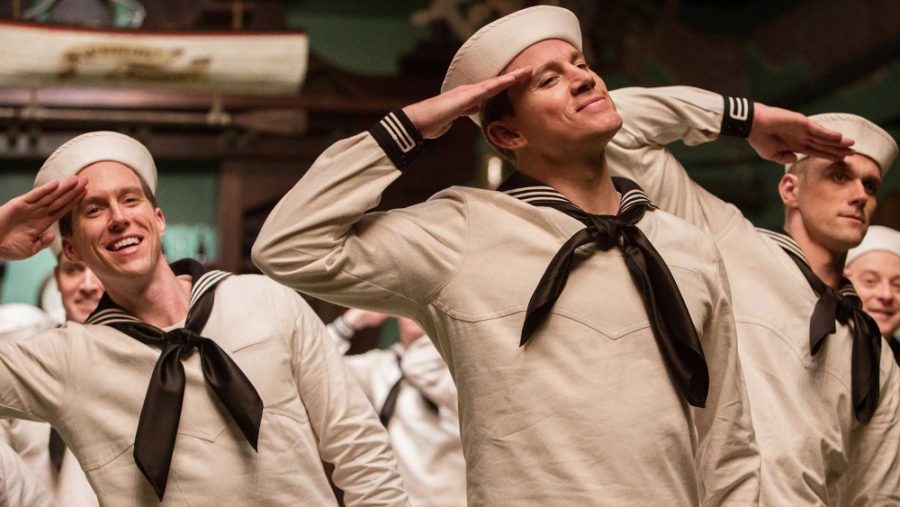I guess it’s fitting that my 100th review for the Daily Wildcat is a bear. I could have given myself an easier time and reviewed a movie about an actual bear (well, as much as an anthropomorphic animated polar bear counts as an actual bear). Reviewing “Norm of the North,” which stands tall at 9 percent on Rotten Tomatoes, would have been like playing tee ball: It’s already standing at the perfect height, waiting for you to clobber it.
It’s not that I’m not excited to talk about “Hail, Caesar!,” the latest from brothers Ethan and Joel Coen (“Fargo,” “No Country for Old Men”). On the contrary, wrestling with difficult films is a greater, more fruitful exercise than verbally eviscerating duds.
There’s just so much going on in “Hail, Caesar!”
The plot itself has the usual amount of interwoven stories, none of which are difficult to follow.
Eddie Mannix (Josh Brolin) is the head of physical production at the fictional movie studio of Capitol Pictures in 1951. He puts out fires, capably extinguishing any sordid drama that could besmirch the studio’s image before it hits the gossip columns.
As if this charge wasn’t difficult enough, he’s also trying to cut back on smoking for his wife’s sake, and a headhunter from the Lockheed Corporation is courting him to come join the company. When the aviation man shows the movie maven a picture of the mushroom cloud over the Bikini Atoll from hydrogen bomb testing, Mannix declares, “Armageddon!”
The biggest problem facing Mannix, though (even dwarfing the threat of an impending nuclear apocalypse), is that his star’s been kidnapped. Baird Whitlock (a bumbling George Clooney), the leading man in the studio’s upcoming prestige picture “Hail Caesar: A Story of the Christ,” has been taken for ransom by a group ominously, and pretentiously, calling themselves “The Future.”
So, Mannix has to juggle the day-to-day studio shlock while searching for his star. Meanwhile, Whitlock becomes acquainted with his captors, who turn out to be communists. It’s not a confusing story to follow along with.
Ideologically, though, it’s incredibly dense, with so much in play, all at the same time, all the time.
The unifying factor across the several planes, if there is one, would be the contradictory and artificial relationship of appearance versus nature.
Take the menagerie of characters at Capitol Pictures.
We are introduced to DeeAnna Moran (Scarlett Johansson), the blonde starlet of “aquamusical” spectacles, performing a graceful, peaceful synchronized swimming sequence. Then, she rips off her mermaid tail, swearing that it’s too tight because she’s pregnant. Quite literally, the studio is stuffing her into a role in which she can’t fit.
Hobie Doyle (a scene stealingly charming and funny Alden Ehrenreich) is America’s up-and-coming “singing cowboy” sweetheart. Unlike Moran, Doyle’s screen persona is more or less who he is in real life, until the studio deems that he now needs to become a serious actor and do stuffy dramas.
In one of the film’s funniest scenes, artsy and self-serious director Laurence Laurentz (Ralph Fiennes) attempts to get Doyle to deliver a single line of dialogue. Laurentz’s frustrated direction devolves into giving the twang-afflicted cowboy a syllabic line reading. There are even tawdry mutterings about Whitlock that fly in the face of his million-dollar smile and Cary Grant-like tan.
The contradictions extend to the communists, who are comprised of screenwriters that the studio’s financially shirked. They bemoan the movie studios and the capitalistic means of production from their posh, beach-side bungalow and their main goal throughout the film is extortion and the acquisition of money through shady means. As they say, those who live in glass houses …
Even the iconography of religion is prodded at. There’s no greater example in the film that reality can’t even be agreed upon than when Mannix has a group session with a Catholic priest, a Greek Orthodox priest, a Protestant minister and a rabbi to discuss the depiction of Christ in the upcoming picture.
Initially, they all bicker about who exactly Christ is. God, son of God, the messiah, or none of the above? Somehow, they all end up agreeing that the studio’s image of Christ is OK, even though they can’t agree on who Christ actually is.
The artificiality of the actual movie making is in the fabric of the film. The Coens and cinematographer Roger Deakins aped the effects of the films of the time period. For a sequence when a submarine surfaces from the sea, the sky and shore are painted, and they look just off enough that you can tell they’re fake. As is the case for the directors’ previous works, they want to remind you that what you’re watching is a carefully crafted fiction.
What does it all add up to? I’m not exactly sure. In the end, our man Mannix has conquered his demons and kept the faith (well, his version of faith).
And I can’t forget to mention that there’s a shot of a blond-haired Channing Tatum, white poodle in hand, posing at the front of a rowboat as if he were George Washington crossing the Delaware River. That alone is worth the price of admission.
GRADE: A-
Follow Alex Guyton on Twitter.









